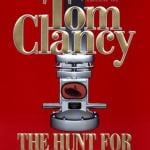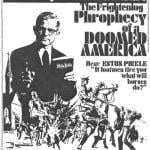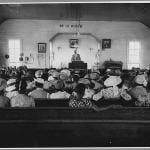I have been re-reading C.S. Lewis’s The Chronicles of Narnia lately — for the first time in years, if not decades — and I hope to post more substantial thoughts on the books here at some point. But for now, I just want to note one little detail that jumped out at me as I was finishing Prince Caspian last night.
To wit, I am intrigued to see how Aslan and Bacchus and the Maenads and all the other “Old Narnians”, in their quest to revive a sort of baptized paganism and to defeat modernity in Narnia, destroy a couple of schools. And I am intrigued to see how Lewis describes the children at those schools as being very fat.
The girls at the girls’ school “were mostly dumpy, prim little girls with fat legs.” And the boys’ school is attended by “a number of boys who looked very like pigs,” and who seem to be turned into actual “very fine little pigs” by Aslan just a few paragraphs later (though Lewis does allow that this detail might be a legend — to the extent that anything is mere legend in Narnia, at any rate).
I am intrigued by this because J.K. Rowling’s mercilessly comical depiction of Harry Potter‘s fat cousin Dudley, including the bit where Hagrid gives him a pig’s tail, was one of many, many things that Richard Abanes criticized her for, in his book Harry Potter and the Bible: The Menace behind the Magick — an impressively thorough collection of reasons to dislike Rowling’s books. And this was one of the few Abanes criticisms that I actually thought might have some merit! To quote my review of Abanes’s book:
Although he makes some valid points, Abanes is so determined to find evil in Rowling’s books that he neglects their better qualities; and when he assesses Lewis and Tolkien, he has nothing but praise — even though their writings contain many of the things he finds so offensive in the Potter books.
References to pagan gods? Juvenile heroes who use words like ‘damn’ and other mild profanities? Centaurs who practice a form of astrology? Narnia has them all. Disrespect for authority? Lewis hilariously mocks both modern English schools and the British parliament in the closing pages of The Silver Chair. Blurring the line between reality and fantasy? Tolkien playfully wrote as though hobbits still lived among us, albeit in hiding; and Lewis — who was not above making himself a character in his own fiction — was quite clear that the Aslan of his books was no mere symbol for Christ but, within the framework of his stories, was actually Christ himself, in Narnian form.
Some of Abanes’ criticisms, however, are worth considering. Rowling’s sometimes merciless depiction of Harry’s fat, cruel cousin Dudley could pose problems for younger readers who are overweight. . . .
So I guess my critique of Abanes was not as thorough as Abanes himself, and I can now add fat-children-as-comic-relief to the list of things that Narnia and Potter have in common, and which Abanes found so problematic in Potter yet was oh-so-ready to overlook in Narnia. Fascinating double-standard, that.












